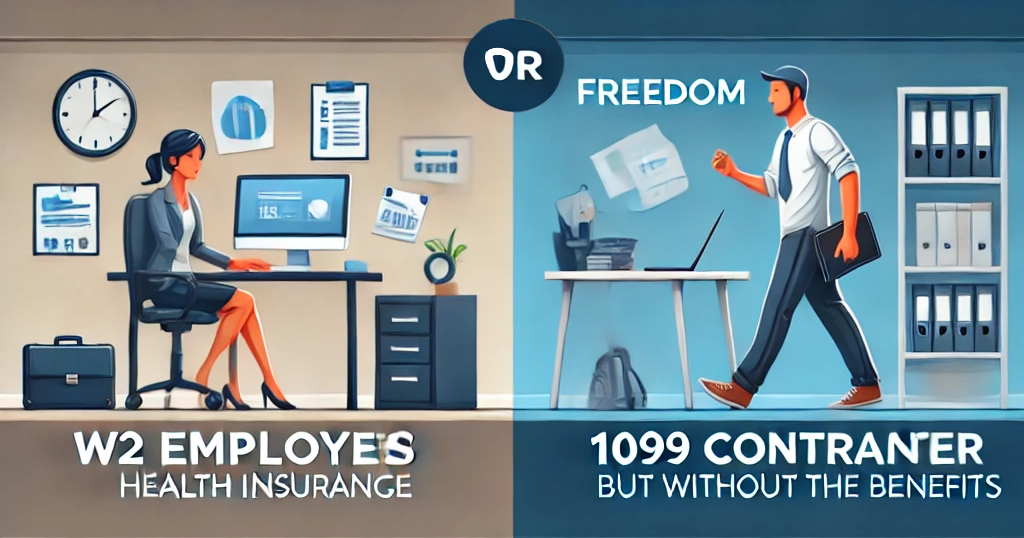As a business owner, one of the most critical decisions you’ll make is how to classify the people working for you: as W2 employees or 1099 contractors. This classification not only affects your financial and legal responsibilities but also impacts how you manage your workforce. Let’s delve into the key differences and considerations to help you make informed decisions.
The Basics
W2 Employees: These are individuals who work for your company under an employment contract. You control what they do and how they do it, including their schedule and the tasks they perform. As an employer, you’re responsible for withholding income taxes, Social Security, and Medicare taxes from their wages, and you may offer benefits like health insurance and retirement plans.
1099 Contractors: These are self-employed individuals or businesses that provide services to your company under a contract. They have more control over how they perform their work, including setting their hours and using their tools or methods. Contractors are responsible for their own taxes and usually do not receive employee benefits.
Key Differences
|
Aspect |
W2 Employee | 1099 Contractor |
|
Control |
Employer controls work details and execution. | Worker controls work details and execution. |
| Financial Responsibility | Employer withholds taxes and may offer benefits. | Worker handles their own taxes and benefits. |
| Work Relationship | Ongoing, more integrated into the business. | Project-based or temporary, less integrated. |
| Tools and Equipment | Provided by employer. | Provided by the contractor. |
| Training | Employer may provide training. | Generally responsible for their own training. |
Why Classification Matters
Misclassifying workers can lead to significant legal and financial consequences. If you classify a worker as an independent contractor when they should be an employee, you could be liable for back taxes, penalties, and other liabilities.
Common Factors for Determining Classification:
- Behavioral Control: If you have the right to direct or control how the worker performs their tasks, they are likely an employee.
- Financial Control: If you control the business aspects of the worker’s job, such as providing tools, covering expenses, or determining how they are paid, they might be an employee.
- Relationship Type: The presence of employee benefits, the duration of the relationship, and the nature of the work in relation to the business’s primary activities all influence classification.
Practical Tips for Compliance
- Review Contracts: Clearly define the terms and conditions, especially the degree of control and independence.
- Consult a Specialist: When in doubt, consult with an HR or legal expert to review your worker classifications.
- Document Everything: Keep detailed records of contracts, job descriptions, and communication that clarify the nature of each working relationship.
Conclusion
Properly classifying workers as W2 employees or 1099 contractors is crucial for compliance with employment laws. By understanding the key differences and the factors that influence classification, you can make informed decisions that protect your business and ensure fair treatment for your workforce.
For more personalized advice or specific questions, feel free to reach out to schedule an appointment with one of our amazing UMW SBDC Consultants here. We’re here to help you navigate these important aspects of running your business.
Bianca M. Guzman, Business Consultant
Publisher: Source link











